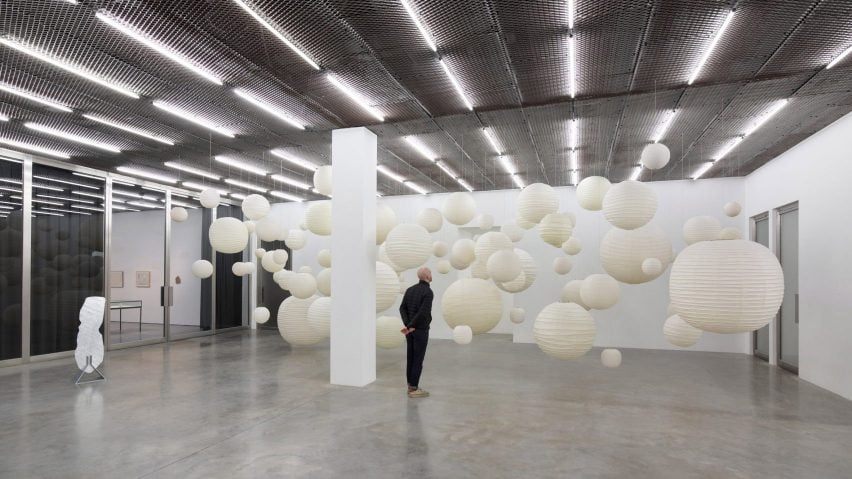
Isamu Noguchi's sculptural Akari lamps are "poetic, ephemeral, and tentative"
Continuing our mid-century modern design series, we explore Japanese-American designer Isamu Noguchi's Akari lamps made from Japanese washi paper, which remain a staple in stylish interiors to this day.
The Akari lamps were designed by Noguchi, who began his career as an artist after dropping out of his premedical studies. He was born in Los Angeles in 1904 to an American mother and a Japanese father.
In 1927 he left the US to work with sculptor Constantin Brancusi in his Paris studio, before travelling the world in the 1920s and 30s – journeys that would come to influence his work in both art and design.
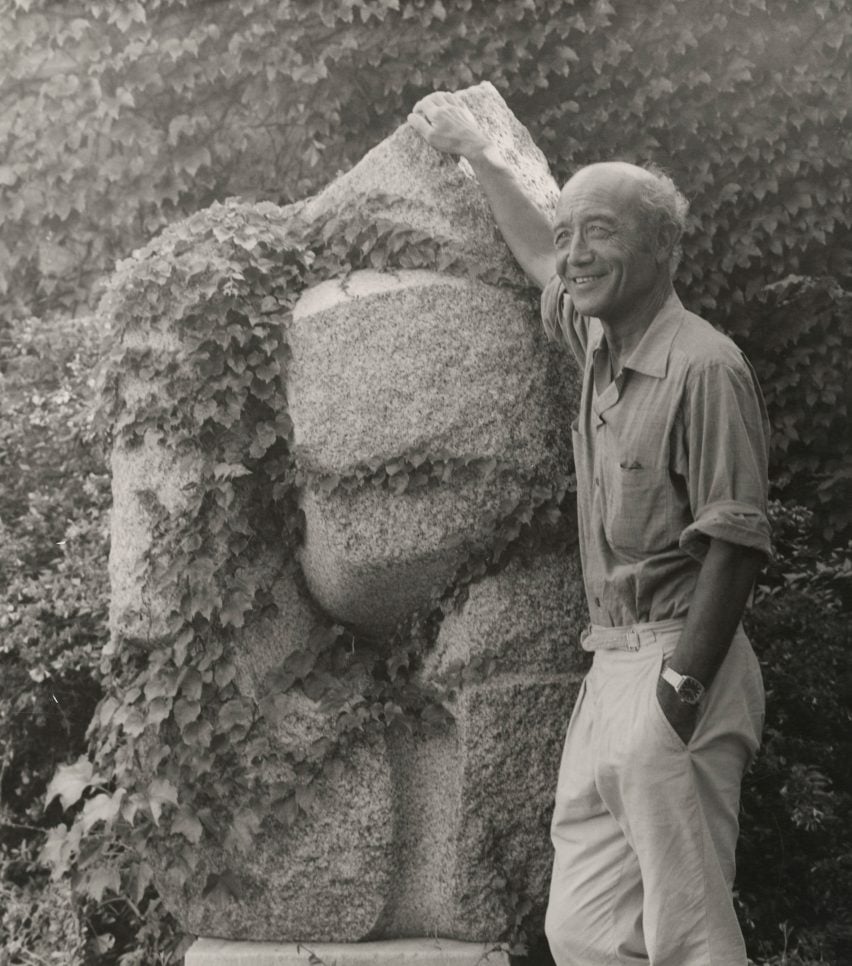
While Noguchi started out as a sculptor, he was never wedded to any one creative industry, creating set designs for dancer and choreographer Martha Graham and eventually moving into furniture and product design.
His background in sculpture informed Noguchi's furniture designs, which often have organic, undulating shapes.
"Everything is sculpture," Noguchi said. "Any material, any idea without hindrance born into space, I consider sculpture."
Noguchi designed the first Akari light in 1951
Among Noguchi's best-known pieces are his glass-topped IN-50 coffee table for furniture brand Herman Miller and his Model 312 Cyclone dining table for American company Knoll, but most people probably associate the designer with his Akari lamps.
Made from Japanese washi paper according to the traditional method of Japan's Gifu region, the lighting design came about after Noguchi visited Gifu City in 1951.
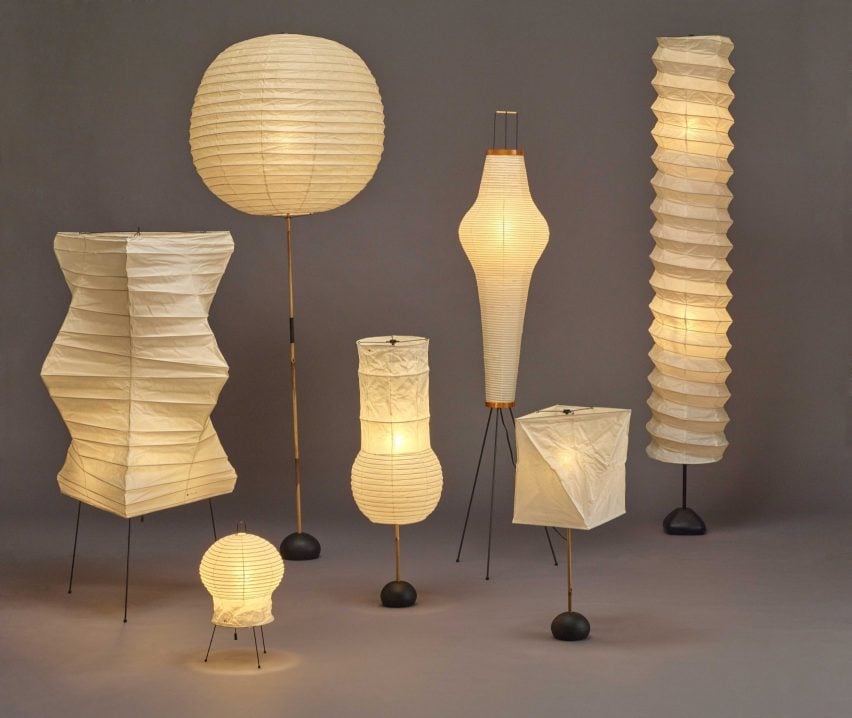
Its mayor asked the artist how to make interior decorators outside of Japan interested in traditional paper lanterns, to which Noguchi replied that the solution was to make them look modern.
Inspired, he began creating the lamps, for which the designer came up with a new name: Akari.
"The name Akari, which I coined, means in Japanese 'light as illumination'", Noguchi said, according to Masayo Duus' book The Life of Isamu Noguchi.
"It also suggests lightness as opposed to weight," he added. "The ideograph combines that of the sun and the moon. The quality is poetic, ephemeral, and tentative."
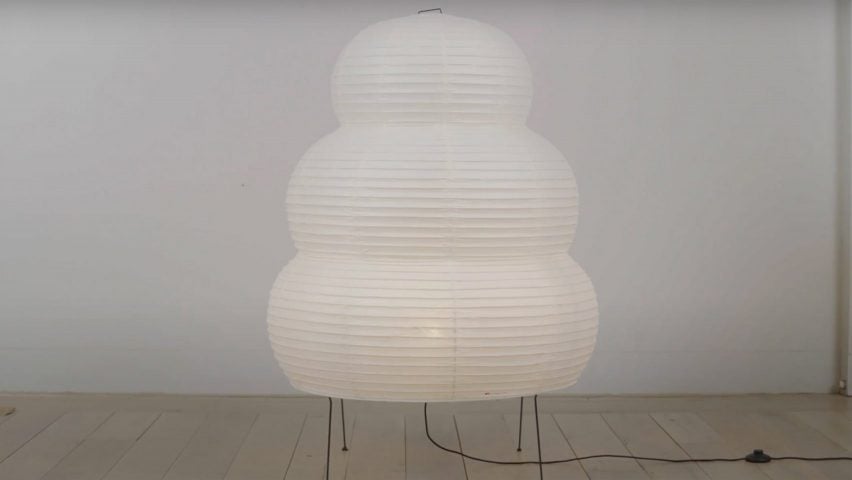
The original Akari lamps were produced by manufacturer Ozeki & Co in Japan, which still makes them today.
To construct the handcrafted lamps, washi paper made from the inner bark of mulberry trees is cut into strips. These are then glued onto a framework made from bamboo ribbing, which is stretched across moulded wood forms.
Once the washi paper has dried, the craftspeople disassemble and take out the internal wooden form. This leaves the washi paper stretched across the bamboo ribbing, which can be collapsed and flat-packed.
Customers then stretch the paper form over a metal frame to form the finished lamp.
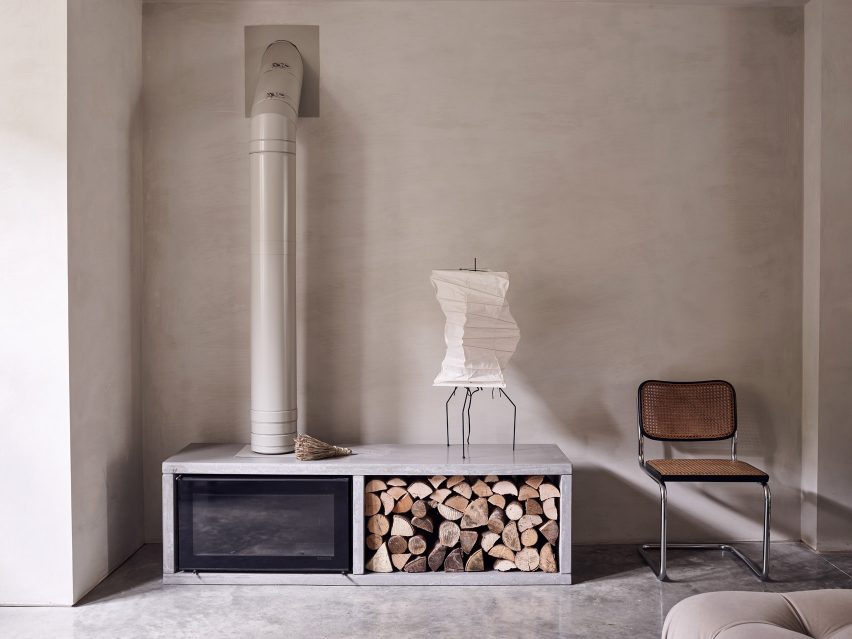
Noguchi wanted the lamps to have a warm, natural light and tried to avoid the "harshness" of electrical light.
"The light of Akari is like the light of the sun filtered through the paper of shoji," he said in 1981. "The harshness of electricity is thus transformed through the magic of paper back to the light of our origin – the sun – so that its warmth may continue to fill our rooms at night."
Akari lights originally seen as "deformed"
At the time of their launch, the lamps, which Noguchi thought of as "light sculptures", were received with scepticism.
"Japanese reporters who saw the lamps at his house thought of them as 'deformed Gifu lanterns,'" wrote Duus.
"Their odd shapes did not conform to the Japanese notion of what a lantern should look like, and many assumed that Isamu had designed them purely for commercial purposes."
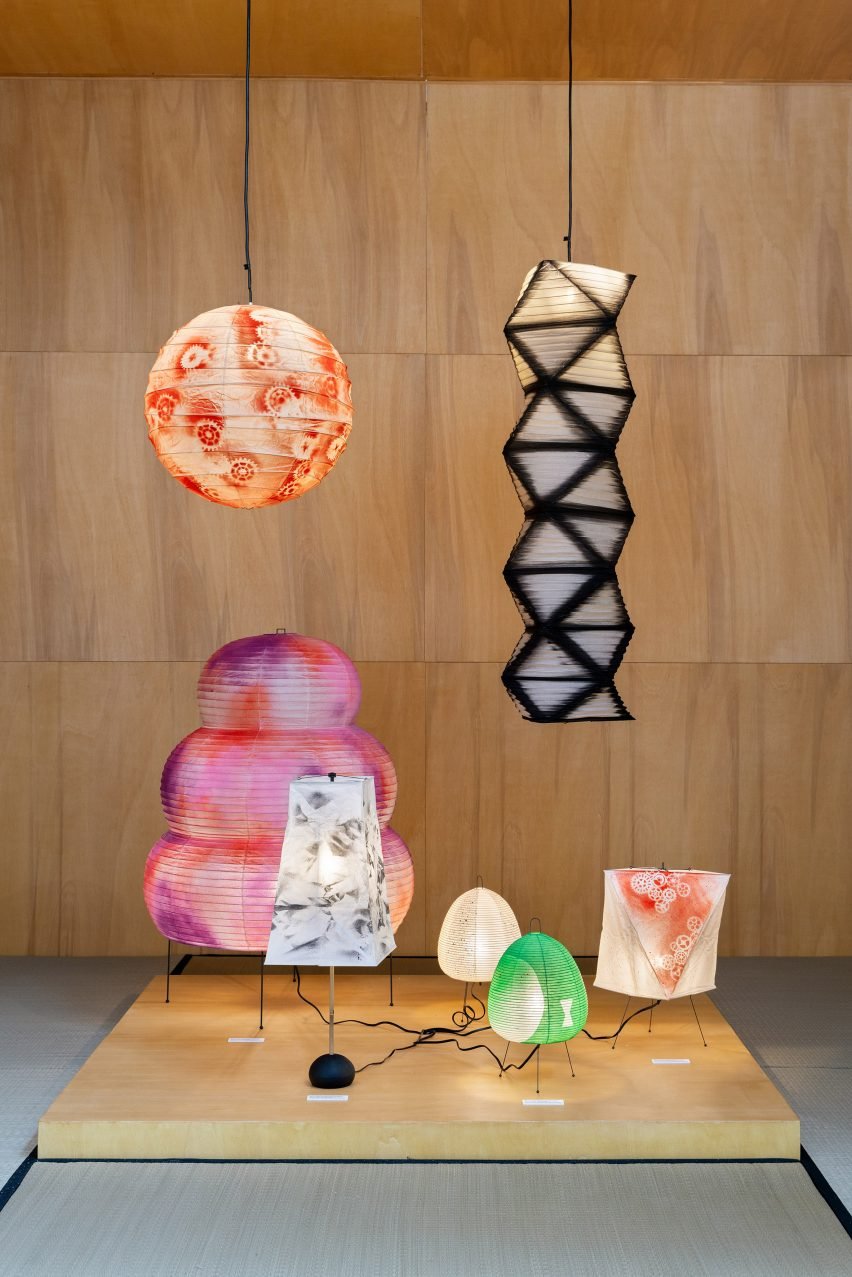
The lamps have indeed stayed commercially popular and since 1951, more than 100 lights have been released in the Akari series, in sizes ranging from 24 to 290 centimetres.
The forms of the Akari lamps range from traditional round rice lamps to a horn-shaped floor lamp. Other versions have playful zigzag or cloud shapes and come in colourful painted versions.
"Noguchi didn't believe in reproductive sculpture, and through the handcraft by which they are still produced, every example of every lantern is truly unique," Dakin Hart, senior curator at The Isamu Noguchi Foundation and Garden Museum, told Dezeen.
"Like pinecones on a tree, sunflowers in a field, or stars or clouds in the sky, every Akari lantern is a perfect, inexact example of its type."
Lamps represented the US at Venice Art Biennale
While they might have been perceived with scepticism when they were first released in Japan, the Akari lights have since achieved international recognition and are often seen in interior design features.
In 1986, 35 years after they were first created, Akari lamps were among the works featured in the US exhibition for the 42nd Venice Art Biennale, called Isamu Noguchi: What Is Sculpture?
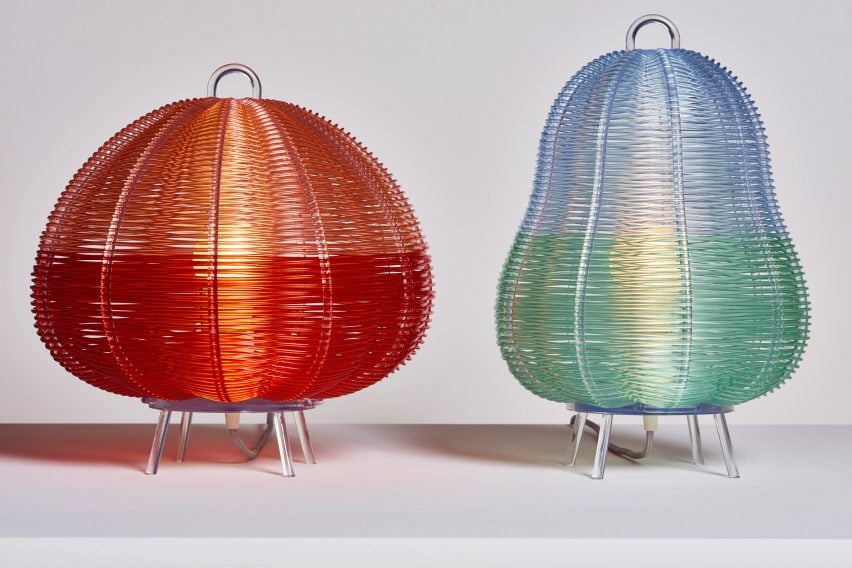
Today, the Akari lights are sold by the prestigious furniture brand Vitra, among others, and regularly reinterpreted by contemporary designers.
At the Radical Design exhibition at Milan design week 2024, NYC artist Futura spray-painted a selection of Akari lamps in different bright hues, while at the Future Impact exhibition at Singapore Design Week 2024, designer Gabriel Tan showed his Good Gourd lamps.
These nod to the shapes of Noguchi's Akari lamps, but are made from a structure that is 3D-printed from recyclable plastic and then hand-strung with fishing lines.
Perhaps it's no wonder that the Akari lights have remained popular for over 70 years, as their organic, sculptural shapes still bring an artful feel to modern homes.
"All that you require to start a home are a room, a tatami, and Akari," Noguchi concluded.
The main image is by Ollie Hammick, courtesy of White Cube.
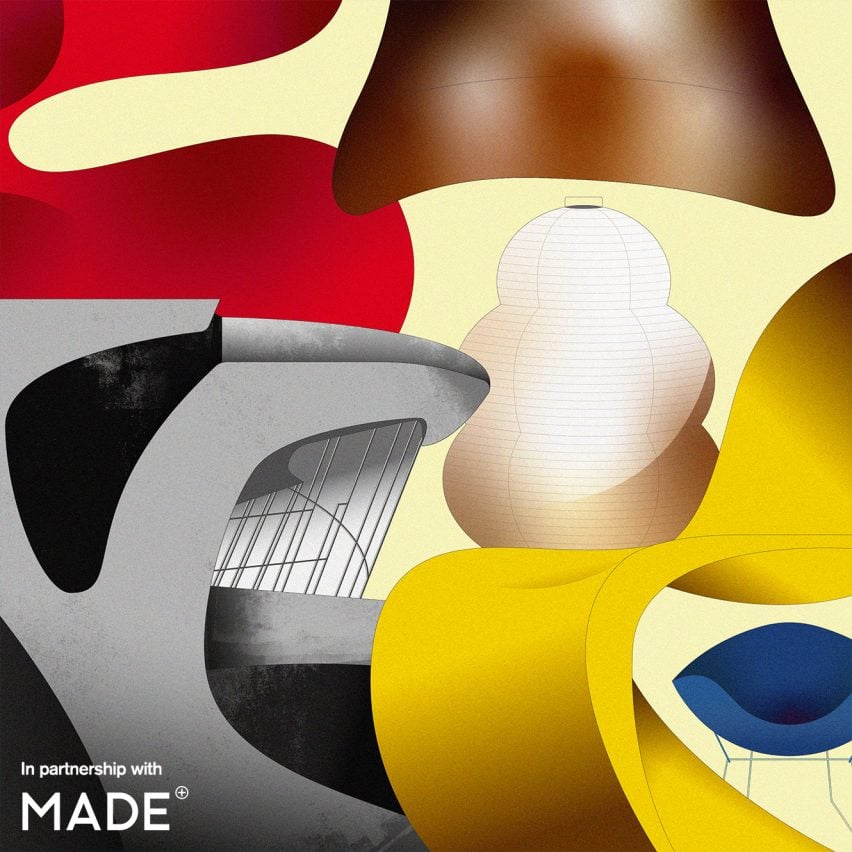
Mid-century modern
This article is part of Dezeen's mid-century modern design series, which looks at the enduring presence of mid-century modern design, profiles its most iconic architects and designers, and explores how the style is developing in the 21st century.
This series was created in partnership with Made – a UK furniture retailer that aims to bring aspirational design at affordable prices, with a goal to make every home as original as the people inside it. Elevate the everyday with collections that are made to last, available to shop now at made.com.